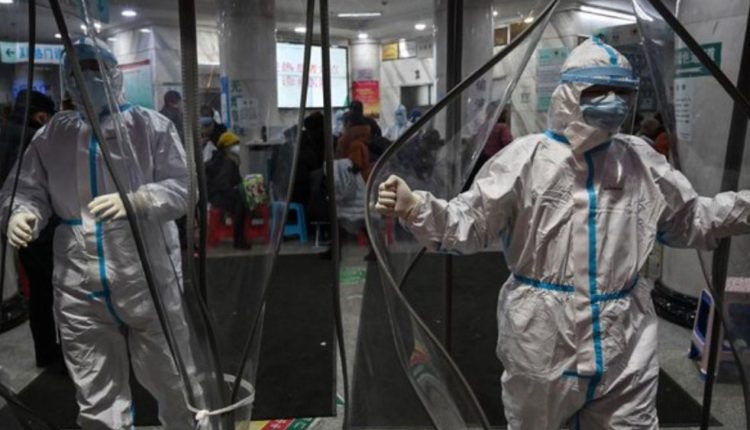Coronavirus: what we do and don’t know

(AFP) Paris: How deadly and how contagious is the coronavirus? When do symptoms appear, and can a patient spread the virus before they do?
Experts are zeroing in on these and other questions, but clear answers are not yet at hand.
The toll so far
As of Thursday, some 7,700 cases have been confirmed in China, its country of origin, with at least 170 fatalities.
The virus has spread from the city of Wuhan across China to more than 15 countries, with about 60 cases in Asia, Europe, North America and, most recently, the Middle East.
No deaths have been attributed to the virus outside China. 2019-nCoV, as it has been named, is part of the coronavirus family, the source of two previous deadly epidemics.
The 2002/03 SARS outbreak (Severe Acute Respiratory Syndrome) started in Guangdong Province and killed 774 people out of a total 8,096 infected.
The 2012 MERS outbreak (Middle East respiratory syndrome) killed 858 people out of the 2,494 infected.
The respective mortality rates for SARS and MERS patients was 9.5 and 34.5 percent, far higher than for the new coronavirus.
Michael Ryan, director of emergency response at the World Health Organization said Thursday that around two percent of confirmed cases had died.
“Two percent case fatality is still a tough case fatality when you compare it to the case fatality for seasonal flu or other things,” he said.
How contagious ?
Estimates of how easily coronavirus spreads range from a “base reproduction rate” of 1.4 to 3.8 people infected by a single patient, according to David Fisman, a professor at the University of Toronto.
Scientists at Britain´s Imperial College, meanwhile, estimate that each coronavirus patient infects on average 2.6 others — making it roughly as infectious as annual influenza outbreaks.
A study published Wednesday in the New England Journal of Medicine said the period between exposure to coronavirus and a patient displaying symptoms was on average 5.2 days.
Health authorities in France and other countries have set an isolation period of 14 days for repatriated nationals and other people coming from the coronavirus hot zone.
When is it contagious?
This crucial question remains unanswered. On Sunday, Ma Xiaowei, head of China´s National Health Commission, said that transmission of coronavirus is possible before symptoms set in, during the disease´s incubation period.
That is also true for seasonal flu, but was not the case for SARS. But some experts including Mark Woolhouse, professor of Infectious Disease Epidemiology, at the University of Edinburgh, said it was “premature” to conclude asymptomatic transmission.
Person-to-person transmission
The virus is thought to have originated from wild animals, probably bats, but is now spreading from person to person.
Almost all cases of such transmission have occurred in China, but there have also been a handful of cases in Vietnam, Germany and Japan.
“Globally, there have been only a few scattered, individual cases of onward, secondary transmission,” said Stephen Morrison from the Center for Strategic & International Studies in Washington.
He warned however of the risk of “secondary outbreaks” in countries with limited health security.
What are the symptoms?
A study of 99 coronavirus patients published Wednesday in The Lancet found that around half of cases occurred in people with underlying chronic diseases, such as heart disease and diabetes.
All patients had pneumonia, most had a fever, 80 percent of them were coughing and more than half had trouble breathing.
Identifying coronavirus symptoms is all the more important — and difficult — because of a simultaneous epidemic of seasonal flu, which has similar symptoms.
Another study identified the genome sequences of coronavirus strains taken from nine patients and found them to be nearly identical (99.98 percent similar).
Weifeng Shi from the University of Shandong, said this suggested the new coronavirus originated from one source and was detected relatively quickly.
“However, if the virus transmits to more individuals, constant surveillance of mutations arising is needed,” he said.
Avoiding infection
Health authorities and scientists say the standard precautions against viral illnesses are applicable: wash your hands frequently, cover up your coughs, try not to touch your face.
Anyone who does come down with the virus should be placed in isolation.
“Considering that substantial numbers of patients with SARS and MERS were infected in health-care settings”, precautions need to be taken to prevent that happening again, the Chinese team warned in a Lancet study last week.
